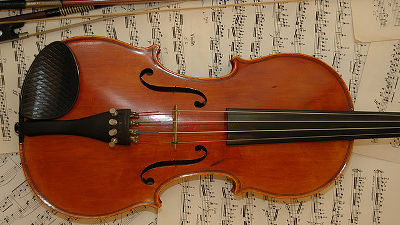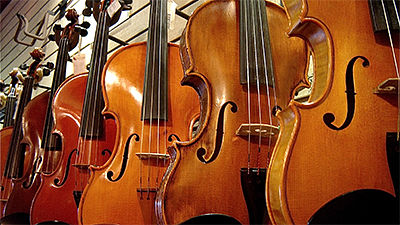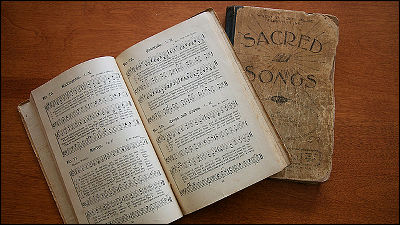It is actually theoretically impossible to perfectly tune the king of the instrument "piano"
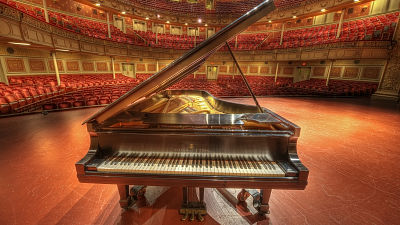
ByBrook Ward
The piano which is adopted in a wide genre ranging from classical music to pop / rock musicKing of instrumentsIt is said to have been, since the birth of the 18th century, has attracted many people. It is a piano that seems to be "perfectly indescribable" with a beautiful tone and reverberation, rich expressive power, but in fact it is known that tuning that resonates perfectly is impossible in principle.
Why It's Impossible to Tune a Piano - YouTube
Before going into the explanation of the piano itself, first from the explanation of the instruments that used strings. String instruments such as violin and guitar vibrate the string by rubbing and playing the string with a bow, and are producing sound.
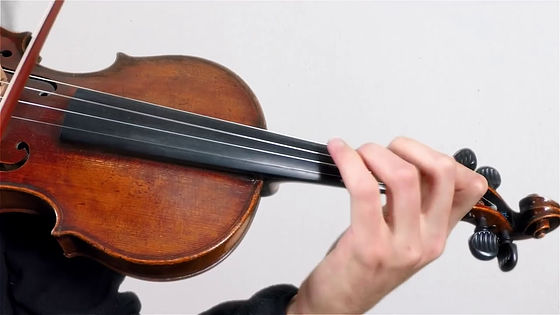
The height (pitch) of the sound to be emitted is determined by the speed with which the string vibrates. The second is higher than the top vibration, the third is more than the second, and the more the sound waves are finer the higher the sound.
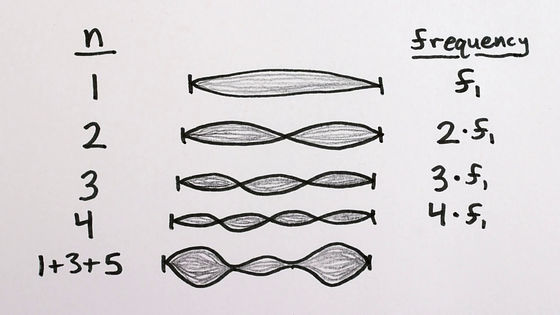
And there is a certain rule for the ratio at which this sound rises. When the vibration of the top is the standard ("Do 1") in the figure below, when the frequency doubles the first, the pitch of the sound is exactly twice as highOne octave above("D 2") will be. When the vibration frequency further increases and the vibration becomes three times as much as the original sound, the sound is delayed with respect to the sound "D 2"5 degreesSound ("S 2") will be. In addition to four times the "So 2" against4 degrees("Do 3"), when it is 5 times3 degree long("Mi 3"), if it is six times3 degree short("So 3"), the sound gradually increases while narrowing the pitch gradually as the multiplier increases by "1". If such a ratio of frequencies is a simple integer ratio "Harmonics(Overtone / pure musical interval)Holds as a complete chord to the reference soundcan do.

Based on this characteristic, stringed instruments can perform string tuning (tuning) by using the sound of "harmonics". When it is a violin, harmonics sound that comes out by putting your finger on one third place of the lowest string "G line" and one half of the D line on that one line and rubbing the bow ) To be consistent, it is possible to perform perfect tuning.
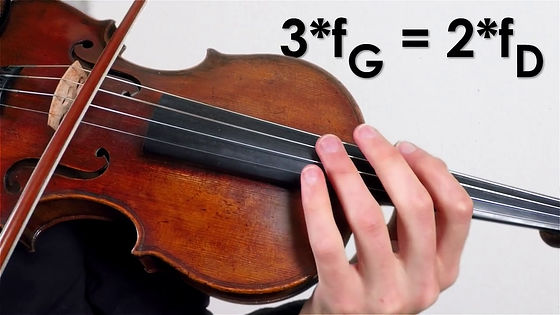
Even in the case of a guitar, many people know that tuning can be performed with the same harmonics sound by adjacent strings, such as 6 strings 5 frets and 5 strings 7 frets.

In the case of stringed instruments it is comparatively easy to do tuning, but the situation will also change for pianos that are also keyboard instruments, even instruments that use strings as well.

When becoming a full-size piano, 12 pitches per octave are about 7 octaves, and a dedicated string is stretched for each sound. In addition, the situation is even more complicated as more than half of the sounds are covered by two to three strings.

The problem will become apparent every time the scale is lined up. For example, there are no problems when two sounds are arranged in full sound (= semitone × 2) ......

The problem will be revealed when it comes to the case that it is raised by one octave by all sounds × 6 (= semitone × 12). "Frequency rising by one octave" means that the frequency should be doubled ... ...

If you move the whole sound by six, a gap will occur. When expressing this mathematically, it is "9/8 6 th power", but its solution is2.027286529541 ....... In other words, when stacking all the sounds that were supposed to be divided into six octaves in six times by the width of the original sound, there is a contradiction that somehow exactly exactly one octave is exceeded.

The same thing can be said by changing the steps of the sound. In the case where three degrees (= semitone × 4) are superimposed and made into an octave, "5 / 4th power =1.953125 ..."This time it is not enough for one octave.

Even when twelve semitones are stacked to make it an octave, "16 / 15th power =2.16942521297 ......"This is not exactly the octave again.

And it can be proved mathematically.Rational root theorem, It proves that the solution is not 2 if we use the integers a and b and the n larger than 1 to express the following equation.

Up to this point we have considered "overtone", that is, a pitch obtained by dividing the vibration frequency of a string by integer,Simply piling the original pitches resonating in principle does not realize a complete octaveIt proved to be that.
So how does the piano realize the perfect octave? The answer is to divide a pitch of one octave by 12 equal frequency ratiosMean temper(12 equal temperament) is adopted. "Twelve equally divided sounds will be one octave = 12th root of 2By decomposing one octave according to ", the piano achieves equal pitch over the whole area.

However, it does not mean that "octave can be achieved and it is a happy new year" and another problem that the divided intervals do not echo completely will come to my mind. The 12th root of 2 isIrrational number, It can not fully resound like a genuine pitch that can be expressed in fractions (= rational numbers) such as "three thirds" or "two thirds".

In other words, it can be said that the piano tuned by the equal temperament balances the whole while including a very small dissonance in the whole area.

When I show this mathematically, it looks like this. The octave becomes "2" which is exactly "12" of the twelfth root of 2 "and the complete octave is realized, but other 5 degrees and 4 degrees, long and short 3 degrees are ideal values From the harmonic overtones, you can see that it is slightly shifted up and down.

This is sometimes felt as "delicate" of delicate sounds when playing the piano. In most cases it is tuned not to worry about this gap, but pulling a chord may cause a slight "swell" of the sound to be felt.

However, this swell does not occur in the case of a chord by pure pitch. This is because chords are composed of sounds resonating in principle.

In many cases, the piano is tuned in "equal temperament". The same thing can be said with the commercially available tuner and electronic musical instruments, basically tuning according to the equal temperament, the pitch is set. However, there are models that can set scales other than equal temperament for some equipment.

As you can see, in the piano it was understood that the tuning is done in a condition that it can be said "tsujimatsu" so to speak on the basis of the octave. However, I can not forget that there is a very big merit here. Musical instruments tuned by the equal temperament are adjusted so that twelve scales equally resonate, so the same sound can be obtained regardless of which key (= key) is played. With this, there is a big merit that it can deal smoothly with music played with various keys.

Such a background is hidden also in the sound of a piano playing and listening to a lick. Next time you listen to this hidden truth when you play the piano or listen to it, you may feel different ways and charms of the piano.
Related Posts:



